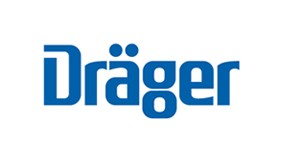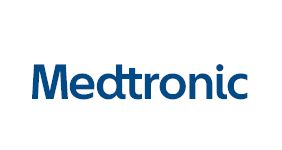Virtual Critical Care: Providing Predictive, Remote Care Amidst Acute ICU Staff Shortages
Insights By: Kaustubh Savant, Healthcare Senior Industry Analyst, Frost & Sullivan.
The coronavirus (COVID-19) has fueled a demand for solutions that can help cater to large patient populations remotely. Further, the shortage of intensivists, as estimated by the Committee on Manpower for Pulmonary and Critical Care Services (COMPACCS) trial, is expected to increase from 22% in 2020 to 35% by 2030. These, as well as changing reimbursement policies, are some of the key trends that will define the future market for virtual critical care. With rising demand, the competitive intensity in the virtual care space has increased.
Both patient monitoring and electronic medical record (EMR) companies are trying to develop integrated solutions. Competition is also coming from niche analytics and B2C telehealth companies that are expanding their critical care portfolio to offset decreasing margins in low-acuity segments. High first-time installation and implementation costs have been a major barrier to the widespread adoption of virtual ICU platforms. The briefing "Virtual Critical Care: Providing Predictive, Remote Care Amidst Acute ICU Staff Shortages" covers strategic perspectives on how to best design holistic perspectives on new technology platforms as well as services used for providing complete virtual care for critical care patients. It also explains the current market dynamics and future growth opportunities in the space.
The virtual talk session specifically aims to provide strategic viewpoints on pressing business issues in the virtual critical care industry:
- Market Growth Insights—Growth trends, high-growth segments, market expansion areas, etc.
- What are the most desired characteristics for virtual care solutions in acute care?
- Is there an opportunity to expand outside of critical care for other at-risk patients?
- Proven options for right positioning and branding
- New profitable business models to deliver on value-based care
- Top growth opportunities to focus on in the next five years
A glimpse into the growth opportunities identified by Frost & Sullivan within the virtual ICU industry include: 1. Affordable, Easy-to-Deploy, and Scalable Solutions for Better Adoption:
1. Affordable, Easy-to-Deploy, and Scalable Solutions for Better Adoption: A majority of the virtual critical care solutions market is penetrated by a few Tier I vendor solutions. Most of these solutions have been adopted by larger healthcare entities as virtual critical care solutions were seen as a costly value proposition until now. COVID-19, in a way, has been responsible for democratizing healthcare. There is a need for virtual critical care solutions that can be quickly deployed and scaled up, taking into account healthcare providers' existing infrastructure and their requirements to cater to a large critical care patient pool.
2. Strategic Geographic Expansion to Improve Market Access: A rising aging population and shortage of healthcare staff are the main drivers for the increasing demand for virtual critical care solutions. However, compared to the United States and EU-5, the GCC region has not seen widespread adoption of these solutions due to the lack of clinical awareness and targeted marketing. The demand for virtual critical care is not similar in all regions, even within a country. Thus, a strategic plan is needed for geographic expansion while entering a new region; for example, companies can focus on region-specific, centralized project opportunities.
3. Leveraging AI-based Solutions to Optimize Workflows and Clinical Outcomes: Virtual ICU has come a long way since the introduction of centralized audio-visual solutions in early 2000. With continuous monitoring, ICU technology has evolved to capture data from multiple sources, including EMR, medical devices, and ventilators. This has led to the ICU being the most data-rich center of hospitals. As the care moves from reactive to predictive, companies should focus on innovating their predictive offerings.
During the Arab Health Exhibition and Congress in 2016, the UAE Ministry of Health signed its first virtual ICU agreement with Philips Electronics Middle East & Turkey to establish the remote critical care Tele-ICU project, which provides remote, around-the-clock medical consultancy services in the areas of critical care, medical simulation, and telemedicine. To address distance limitations, the project acts as an innovative form of clinical communication between hospitals. The usage of virtual ICU technology in the GCC region has steadily increased since its inception. Many local hospitals are cooperating with both technology companies and global health systems to provide critical care patients with optimized remote clinical care options. Some of the recent GCC industry developments include:
Du (Emirates Integrated Telecommunications Company) signed a Memorandum of Understanding with Philips in June 2021 to work together to expedite the vital, data-driven transformation of healthcare in the UAE. The infrastructure supplied by Du, along with Philips's technology innovations, will provide healthcare staff with advanced capabilities for predictive analytics, data visualization, and reporting as part of the collaboration. This groundbreaking collaboration will concentrate its efforts on achieving value-based care by improving patient and healthcare worker experiences, delivering better health outcomes at lower costs across the healthcare continuum.
Sheba Medical Center, Israel's largest hospital, partnered with Al Tadawi Medical Center to provide on-site and remote telemedicine treatments and consultations in Dubai at the end of 2020. Sheba Medical Center is renowned as a pioneer in telemedicine technology, particularly through its Sheba ARC Center innovation hub. Sheba and Al Tadawi intend to steadily broaden their medical services and incorporate a variety of innovative healthcare services.
In the future, virtualization of critical care and increased adoption of telehealth in the UAE are expected to play an increasingly important role in helping people live a healthy lifestyle and cope with disease, allowing care providers to better meet people's health needs, improve productivity, and ultimately deliver better outcomes.













































































































